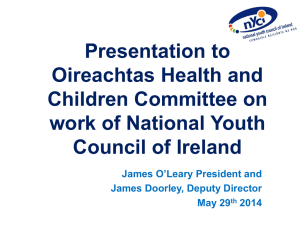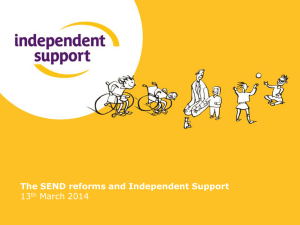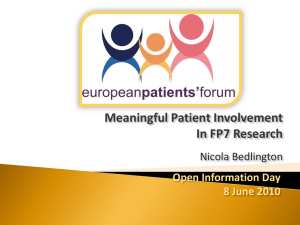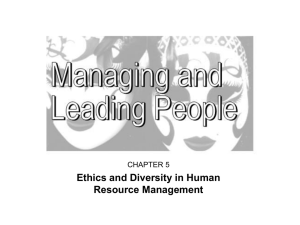found here. - Scottish Care
advertisement
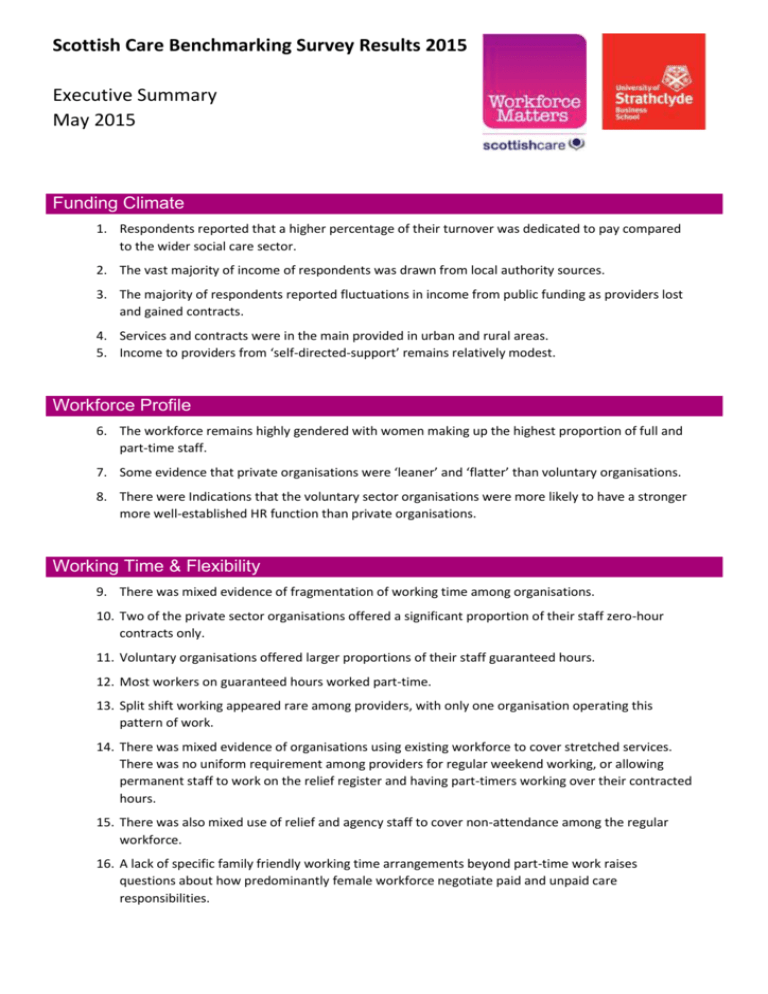
Scottish Care Benchmarking Survey Results 2015 Executive Summary May 2015 Funding Climate 1. Respondents reported that a higher percentage of their turnover was dedicated to pay compared to the wider social care sector. 2. The vast majority of income of respondents was drawn from local authority sources. 3. The majority of respondents reported fluctuations in income from public funding as providers lost and gained contracts. 4. Services and contracts were in the main provided in urban and rural areas. 5. Income to providers from ‘self-directed-support’ remains relatively modest. Workforce Profile 6. The workforce remains highly gendered with women making up the highest proportion of full and part-time staff. 7. Some evidence that private organisations were ‘leaner’ and ‘flatter’ than voluntary organisations. 8. There were Indications that the voluntary sector organisations were more likely to have a stronger more well-established HR function than private organisations. Working Time & Flexibility 9. There was mixed evidence of fragmentation of working time among organisations. 10. Two of the private sector organisations offered a significant proportion of their staff zero-hour contracts only. 11. Voluntary organisations offered larger proportions of their staff guaranteed hours. 12. Most workers on guaranteed hours worked part-time. 13. Split shift working appeared rare among providers, with only one organisation operating this pattern of work. 14. There was mixed evidence of organisations using existing workforce to cover stretched services. There was no uniform requirement among providers for regular weekend working, or allowing permanent staff to work on the relief register and having part-timers working over their contracted hours. 15. There was also mixed use of relief and agency staff to cover non-attendance among the regular workforce. 16. A lack of specific family friendly working time arrangements beyond part-time work raises questions about how predominantly female workforce negotiate paid and unpaid care responsibilities. Workforce Insecurity 17. Fixed term contracts were only used by one provider (voluntary sector). 18. Voluntary sector providers were more likely to have made redundancies in the previous year, compared to private providers. 19. Several private providers admitted to uncertainty as to whether they would have to make redundancies in the forthcoming year. Pay & Conditions 20. Cost of living increases were awarded in only two providers, but others attempted to apply some alternative pay increase. 21. Several providers claimed to meet the ‘Living Wage’ across all their salary points. However, scrutiny of minimum points on hourly rates for front-line staff reveals how the Living Wage is sometimes not met. 22. For other providers the Living Wage is not currently a target. 23. In some providers sessional staff are paid below living wage on the minimum, mid-point and maximum hourly rates. 24. At least one provider feared that if the Living Wage were to become a requirement in tenders, it would fear for the viability of the organisation and its services. Other feared for jobs and services. 25. Scrutiny of salary scales at the minimum, mid-point and maximum levels reveals that organisations are struggling to pay some staff at a rate greater than 20% of the minimum wage. 26. As with broader picture, respondents reported that the number of people enrolled in pensions had increased as a result of auto-enrolment. 27. Respondents indicated that auto-enrolment had led to some financial impact on their organisation. Absence & Well Being 28. Some evidence that the group was experiencing problems with absence over and above that experienced by the wider economy, i.e. the median number of days lost for absence exceeded the CIPD estimate of 6.6 days for the whole economy. 29. Long-term absence was also a particular problem for several, with a higher than average percentage of sickness absence attributed to long-term (4 weeks or more) than CIPD average. 30. The use of EAC schemes commonly used as tool to tackle stress at work was above CIPD average. However, further investigation needed before assuming the benchmarking group manages stress any better than wider sector or employers generally. Recruitment & Retention 31. Employee turnover rates varied greatly between providers and averaged 30%, matching the higher estimate for social care, but several providers were well below even the lowest sector estimate at 22%. 32. Main reasons for employees leaving were issues around no guarantees of work, lack of convenient hours, poor pay, travel time and communication, although some providers did not give us data. 33. The average length of service of those who are leaving suggests some organisations are losing valuable experienced staff through ‘negative turnover’ related to pay and conditions. 34. The majority of organisations were devoting increased resources to recruitment. The most effective recruitment tool were organisational webpages and other online supports. 35. Recruitment and retention pressures increasing, showing evidence of worsening situation compared to studies of broader social care sector. 36. Front-line and supervisory posts were the most difficult to fill. 37. Reasons for difficulties in filling front-line posts related to pay and not having enough applicants, competition from other sources such as supermarkets, and insufficient qualifications or skills. 38. For supervisors reasons for recruitment problems included pay, skills and quality of applicants, work experience and not enough applicants. 39. At management level, recruitment problems were attributed to lack of skills, qualifications and too few applicants. 40. Organisations highlighted problems recruiting in particular local authority areas with Highlands, Aberdeen, Dumfries and Galloway and Scottish Borders being the most acute. 41. All organisations reported the resources devoted to recruitment had been relatively stable. 42. The most effective returns from advertising posts came from electronic sources such as their own websites or other online resources. 43. Recruitment problems were not helped by almost universal difficulties in getting references from other employers once a selection decision was made. Training & Skills 44. The majority of organisations either use or intend to use the SSSC Step into Leadership Resource. 45. Majority of providers recognise leadership capabilities or are looking at ways to do so. 46. Majority of organisations did not pay for SSSC registration or technical professional memberships. 47. The proportion of staff who are qualified to the level expected by the SSSC varies considerably. 48. Majority of organisations confident staff not registered would eventually gain necessary qualifications. 49. Providers generally positive about impact of qualifications on practice among qualified staff. 50. Training was largely assessed through traditional methods. 51. Minorities of staff used their own workplace assessors and verifiers, and generally did not provide salary enhancements for staff undertaking these tasks. 52. The majority of providers felt that training budgets were insufficient to cover costs. 53. The majority of providers increased training resources/budgets. Discipline & Grievance 54. As with broader trends, more organisations reported that the number of employment tribunal cases were stable or falling, compared to those that said they had increased over the last year. 55. However, some organisations were more likely to report increases in suspensions, individual grievances and disciplines in the last year than a decrease. Diversity 56. Evidence of providers displaying greater diversity in workforce composition with regard to ethnicity. 57. Several providers reported that they had no workers that were classified as disabled. 58. Gender, age and race were the most common areas of workforce diversity that had been subject to equality monitoring over the last year. 59. Several organisations had undertaken equality training in the past year, but initiatives to provide an equal pay analysis was not evident among providers.
